Technology
Monument Valley 3 breaks the series’ old boundaries by adding a sailboat

During , some more details about Monument Valley 3 emerged. Developer Ustwo Games says the builds on its predecessors in several ways, especially in terms of the gameplay, art style and story.
Perhaps the biggest change in Monument Valley 3 is the introduction of sailing. You’ll be able to move the boat in almost any direction and, as such, “the game is no longer restricted to geometric spaces,” game director Jennifer Estaris said during a call with reporters. Along with unfolding cubes that shift new protagonist Noor onto different planes, Monument Valley 3 is in large part about “deconstructing what we know,” Estaris said.
Naturally, those changes allow for fresh puzzles and visuals as players navigate impossible-looking, MC Escher-style architectural spaces. Aligned with that, Ustwo has evolved the art style with softer and more abstract shapes (you are going to be navigating rivers after all). The result is something that looks very familiar, but like a hazy memory. Meanwhile, the soundtrack from an 18-piece orchestra might just stir up some emotions.
While the original game was about forgiveness and its sequel was a coming-of-age tale, Monument Valley 3 focuses on the themes of hope, togetherness and resilience. Noor is a lighthouse keeper’s apprentice who is tasked with searching for a new source of power before light fades away from the world forever. It’s the “most ambitious story” to date for a Monument Valley game, according to Ustwo marketing manager Jamie Wotton.
All three Monument Valley games are standalone titles with their own stories. That means you’ll be able to glide right into Monument Valley 3 without playing the previous two entries. But there’s plenty of time to check those out first (or revisit them). You won’t have to pay extra for those mobile gaming classics if you have a Netflix subscription. There are no ads or in-app purchases in the company’s games.
Monument Valley is available to Netflix subscribers on iOS and Android starting today, and its sequel will arrive on the service on October 29. Monument Valley 3 will then debut as a Netflix mobile exclusive on December 10.
Netflix revealed some other mobile gaming news during Geeked Week. Its (which includes special weapons and ranked modes) will drop on September 24. Subscribers will soon be able to play and on their mobile devices at no extra cost — the Netflix version of the latter will offer cross-play between iOS and Android.
Meanwhile, Netflix at Squid Game: Unleashed before that multiplayer tie-in game arrives later this year. Last but not least, there was a first look at Blood Line: A Rebel Moon Game, based on Zack Snyder’s Rebel Moon movies. The Netflix-exclusive co-op action game from developer Super Evil Megacorp will debut in 2025.
Science & Environment
Monday was hottest day ever measured by humans, beating Sunday, European science service says: “Uncharted territory”
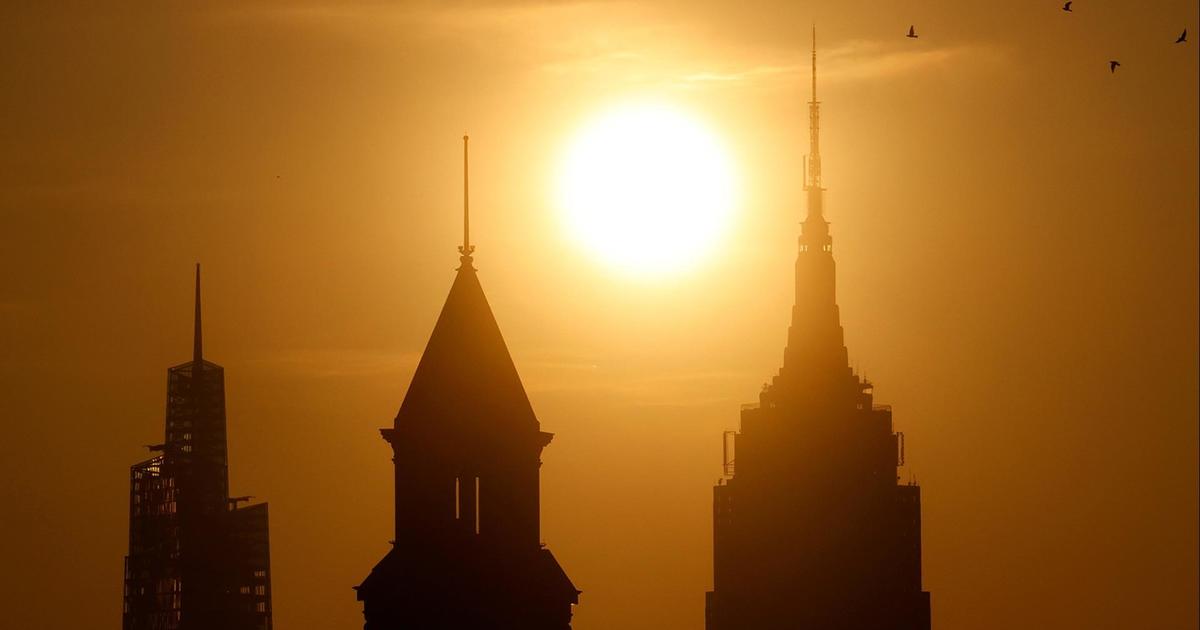
Monday was the hottest day ever measured by humans, beating a record set the day before, as countries across the globe continue to feel the heat, according to the European climate change service.
Provisional satellite data published by Copernicus early Wednesday showed that Monday broke Sunday’s mark by 0.1 degree Fahrenheit.
Climate scientists say the world is now as warm as it was 125,000 years ago because of human-caused climate change. While scientists can’t be certain that Monday was the hottest day throughout that period, average temperatures haven’t been this high since long before humans developed agriculture.
The temperature rise in recent decades is in line with what climate scientists projected would happen if humans kept burning fossil fuels at an increasing rate.
“We are in an age where weather and climate records are frequently stretched beyond our tolerance levels, resulting in insurmountable loss of lives and livelihoods,” said Roxy Mathew Koll, a climate scientist at the Indian Institute of Tropical Meteorology.
Copernicus’ preliminary data shows the global average temperature Monday was 62.87 degrees Fahrenheit.
The previous mark before this week was set just a year ago.
Before last year, the previous recorded hottest day was in 2016, when average temperatures were 62.24 degrees.
While 2024 has been extremely warm, what kicked Sunday into new territory was a way toastier than usual Antarctic winter, according to Copernicus. The same thing was happening on the southern continent last year when the record was set in early July.
But it wasn’t just a warmer Antarctica on Sunday. Interior California baked with triple digit heat, complicating the fighting of more than two dozen wildfires in the West. At the same time, Europe sweltered through its own deadly heat wave.
Copernicus records go back to 1940, but other global measurements by the United States and United Kingdom governments go back even further, to 1880. Many scientists, taking those into consideration along with tree rings and ice cores, say last year’s record highs were the hottest the planet has been in about 120,000 years. Now the first six months of 2024 have broken even those.
Frequency of records being surpassed cited as worrisome
Without human-caused climate change, scientists say extreme temperature records wouldn’t be broken nearly as frequently as in recent years.
“It’s certainly a worrying sign coming on the heels of 13 straight record-setting months,” said Berkeley Earth climate scientist Zeke Hausfather, who now estimates there’s a 92% chance that 2024 will beat 2023 as the warmest year on record.
The former head of U.N. climate negotiations, Christiana Figueres, said “We all (will) scorch and fry” if the world doesn’t immediately change course. “One third of global electricity can be produced by solar and wind alone, but targeted national policies have to enable that transformation,” she said.
“What is truly staggering is how large the difference is between the temperature of the last 13 months and the previous temperature records,” Copernius Director Carlo Buontempo said in a statement. “We are now in truly uncharted territory and as the climate keeps warming, we are bound to see new records being broken in future months and years.”
July is generally the hottest month of the year globally, mostly because there’s more land in the Northern Hemisphere, so seasonal patterns there drive global temperatures.
Recent climate change contributors
Scientists blame the supercharged heat mostly on climate change from the burning of coal, oil and natural gas and on livestock agriculture. Other factors include a natural El Nino warming of the central Pacific Ocean, which has since ended. Reduced marine fuel pollution and possibly an undersea volcanic eruption are also causing some additional warmth, but those aren’t as important as greenhouse gases trapping heat, they said.
Because El Nino is likely to be soon replaced by a cooling La Nina, Hausfather said he would be surprised if 2024 sees any more monthly records, but the hot start of the year is still probably enough to make it warmer than last year.
Sunday’s mark was notable but “what really kind of makes your eyeballs jump out” is how the last few years have been so much hotter than previous marks, said Northern Illinois University climate scientist Victor Gensini, who wasn’t part of the Copernicus team. “It’s certainly a fingerprint of climate change.”
University of Pennsylvania climate scientist Michael Mann said the difference between the this year’s and last year’s high mark is so tiny and so preliminary that he is surprised the European climate agency is promoting it.
“We should really never be comparing absolute temperatures for individual days,” Mann said in an email.
Yes, it’s a small difference, Gensini said in an interview, but there have been more than 30,500 days since Copernicus data started in 1940, and this is the hottest of them all.
“What matters is this,” said Texas A&M University climate scientist Andrew Dessler. “The warming will continue as long as we’re dumping greenhouse gases into the atmosphere. … We have the technology to largely stop doing that today. What we lack is political will.”
Technology
All The Latest iOS 17 Photography Features
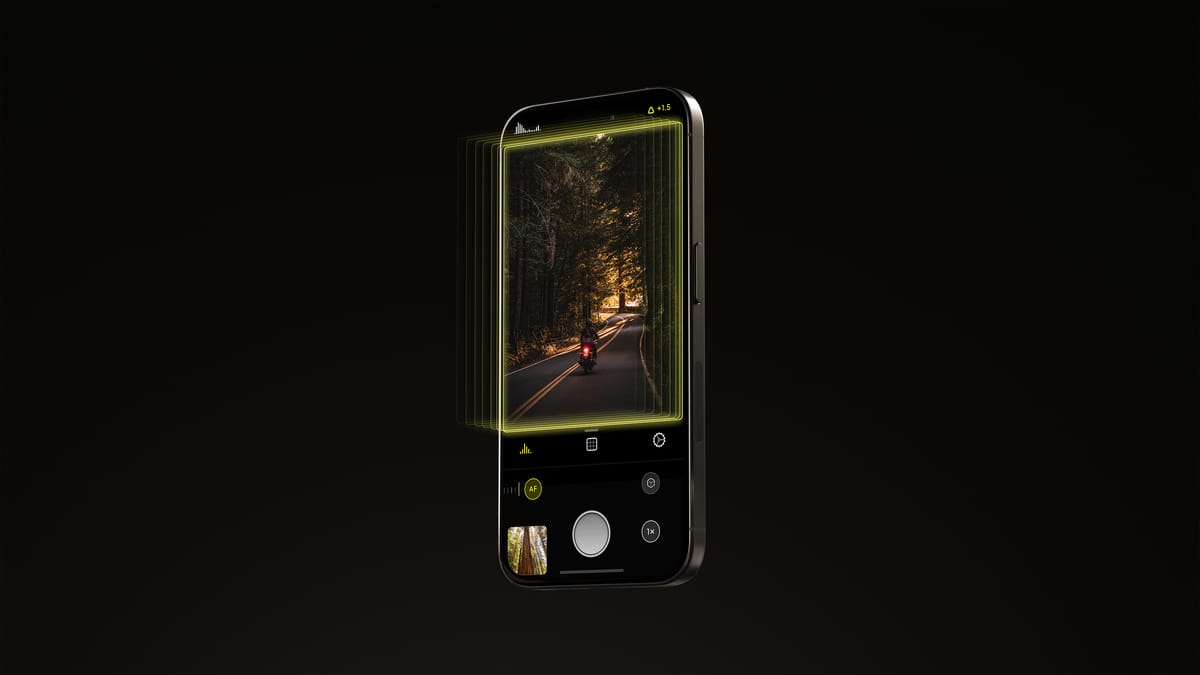
New iPhone season is upon us! Okay, more like the ‘new-iPhones-arrive-week’, but every year the event is inaugurated with a fresh update to iOS. This year, iOS 17 contains a goodies that can make photography feel super fast and responsive. Naturally, we’re supporting them on day 1.
Let’s dig into how we’re supporting them in today’s Halide update, and other ways we spent our summer.
Zero Shutter Lag

When looking at the live preview in the camera on your phone, what you see often won’t be what you get when you snap a photo.
Let’s take a photo of the iPad stopwatch. In the image of the left, we have what we saw in the viewfinder, and the image on the right is what was actually captured.
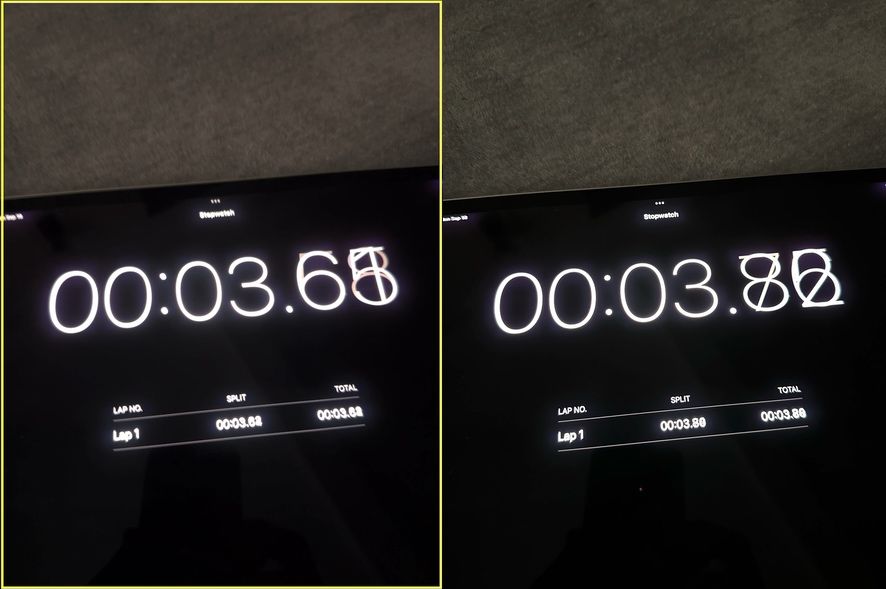
Why is there a difference of about 1/5 of a second? By the time an image arrives on your screen, it’s already been captured. When you tap the capture button, you’re asking the iPhone to capture the next image that hits your image sensor.
While the delay seems small, it can be enough to throw off a perfect shot. This is why, last year, we asked Apple to offer Zero Shutter Lag, and we’re super excited to see it launch!
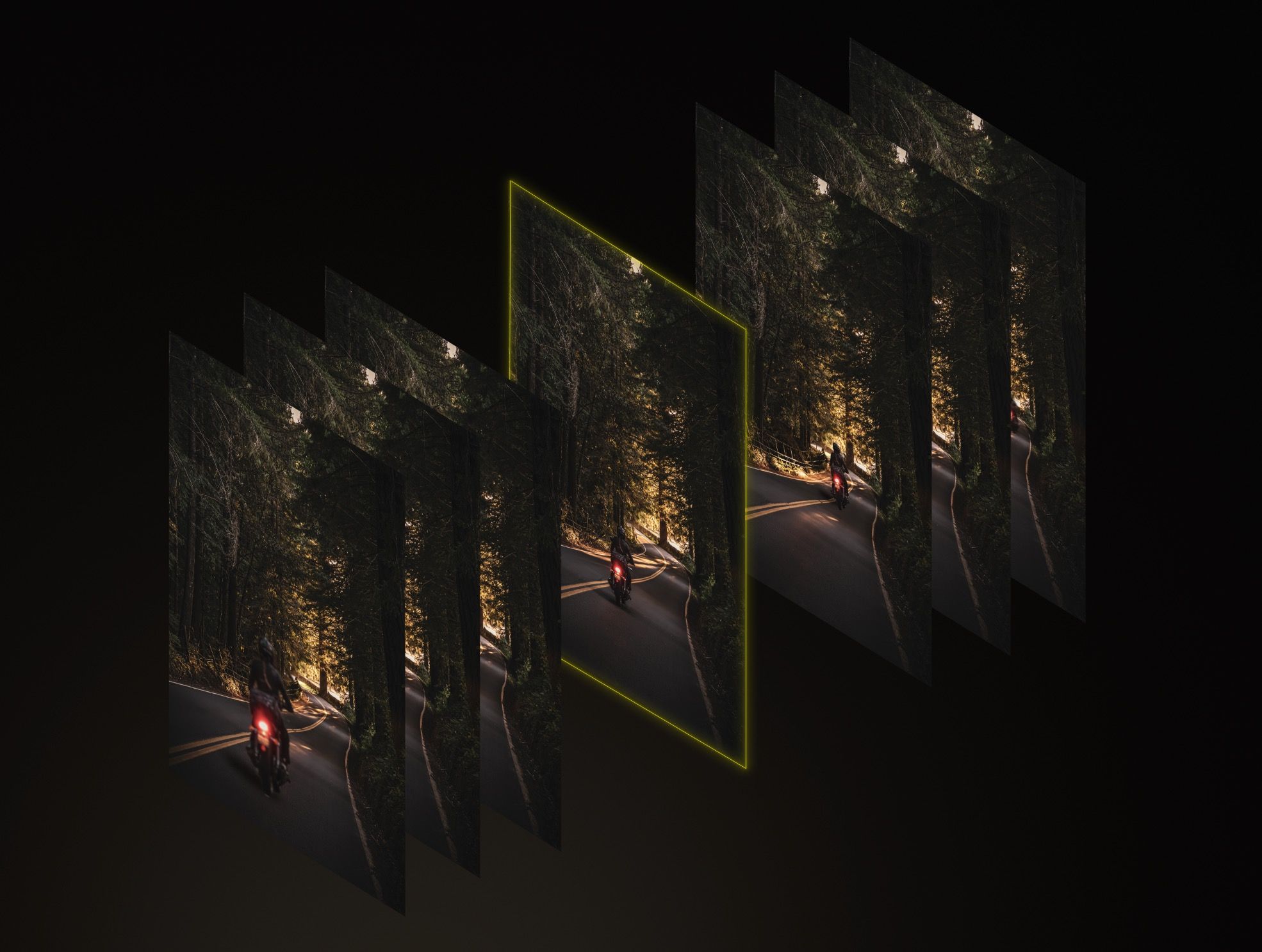
With ZSL, your iPhone constantly captures photos from the moment you start a session. It doesn’t actually save these photos, it just holds them in memory for a few seconds. When an app asks the iPhone to take a photo, iOS actually looks back at the last few seconds of photos and grabs the one that was visible when you tapped that capture button.
There are a few situations where this won’t work: when capturing with manual exposure settings (shutter speed and ISO), or if you’re shooting with flash (shame on you). We imagine the former is a technical limitation that could be fixed someday, but we don’t see flash support coming to ZSL. It would have to leave the light on the whole time you’re shooting, which would be weird.
Prioritizing Responsiveness

After your iPhone picks a photo, its job isn’t done. Next it performs magic such as Deep Fusion, Smart HDR, and some other bespoke adjustments not mentioned in iPhone marketing. Let’s call all of this stuff “smart processing” for brevity.
Smart processing uses a lot of memory and GPUs, pushing your iPhone to its limit. If you keep smashing that capture button while it’s in the middle of processing photos, it will quickly get overwhelmed. Rather than run out of memory and crash, iOS stops allowing you to take photos until it’s had a chance to catch up.
This can make it hard to snap photos of fast moving subjects like the scrub jay that visits you every morning that you named Blorbo.
We’ve had a solution in Halide since 2019: a switch in Capture Settings that lets you turn off the smartest processing. This cuts down the time and resources it takes to process a photo, making it easier for your iPhone to keep up with demand.

This isn’t a perfect solution, because you need to know this switch exists in the first place, and then manually toggle it on and off. No more! With iOS 17, Halide detects when it’s getting overwhelmed and temporarily cuts back on processing.
In other words, if you just snap one photo every few seconds, your photos will get Deep Fusion and similar magic. If you quickly tap the capture button, the first couple of photos will probably get all that processing, but then the system will turn it off so you don’t miss shots. Say hello to Blorbo!

If you don’t like this new automatic behavior, and want to ensure every photo gets all the smartest processing, you can opt-out in Capture Settings by disabling our new ‘Prioritize Responsiveness’ toggle.

HDR Photo Capture and Display

In the last few years, TVs, phones, and computer screens have gotten better at displaying really bright images. You’d notice this of a very bright object, such as a lightbulb, and displayed it on one of these “High Dynamic Range” (HDR) screens. The bright parts really pop.
Of course writing about photography is like dancing about architecture, and we’d love to show you some example HDR photos. Unfortunately, browser support for HDR photos is not great. It’s not nearly as bad as shopping for an HDR television, where you deal with a train wreck of competing formats like HDR10, HDR10+, and Dolby Vision. (Yes, the same industry that brought you “Beta vs VHS” and “Blu-ray vs HD-DVD” continue to innovate.)
Apple wants to avoid a similar fate in still photography, so this year they put their weight behind an open standard called “ISO HDR.” Ok, technically it’s ISO/TS 22028-5, which doesn’t quite roll off the tongue. The important thing is that with iOS 17, Halide captures HDR photos. In fact, it has for years!
While the ISO HDR format is new, iPhones have captured this extra brightness information since 2020, and saving them inside your photos. You might not have noticed, because there was no way for outside developers to actually show the HDR parts of the photos in their apps until iOS 17.
That said… HDR can also be incredibly annoying. If you’ve scrolled through Instagram since they introduced Reels, you’ve come across uncomfortably bright videos. This is because those content creators have cranked up their brightness into the HDR range to grab your attention and stop scrolling, kind of like how TV commercials crank their sound really loud to get your attention. It’s just tacky.
Anyway, in Halide, we don’t want our last-photo thumbnail to throw off your perception while composing a shot, so HDR is turned down in that thumbnail view. HDR is only visible in the full sized reviewer.
The technology behind HDR is thorny, and the artistic side is thornier. Used sparingly, HDR can look incredible. Used incorrectly, it’s an eyesore. We’ve been thinking of elegant ways to deal with it in Halide, and we’ll talk about that in a long post in the future.
Bug Fixes All Around
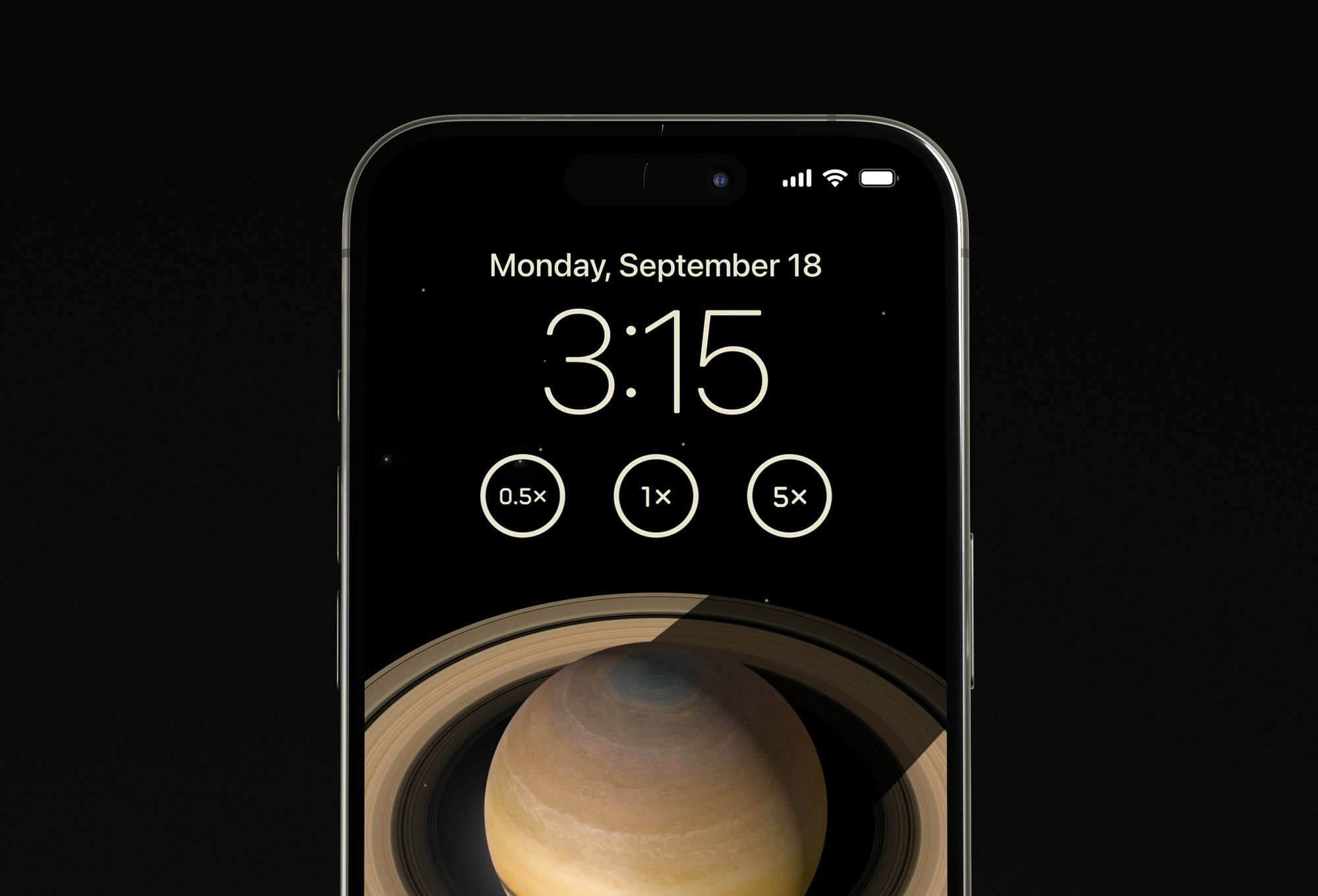
While OS updates give us new toys, they invariably break apps. For example, this is the expected animation when you tap the thumbnail to open our photo reviewer.
But in the early iOS 17 betas, the image jumped in from off screen, upside-down.
We won’t dig too deep into the problem, but to make a long story short, iOS 17 seemed to change how it loaded orientation information during some animations. We reached out to Apple, including code that reproduced the bug for them, and they were able to fix things before iOS 17 broke a bunch of photography apps.
That was definitely a bug, but OS updates can also break things by deliberately changing the way existing code behaves.
iOS 17 changes how widget backgrounds get laid out. Apple told developers how to update apps to handle the changes, but if you don’t follow their instructions and update your app, you can end up with widgets that get cropped weird.
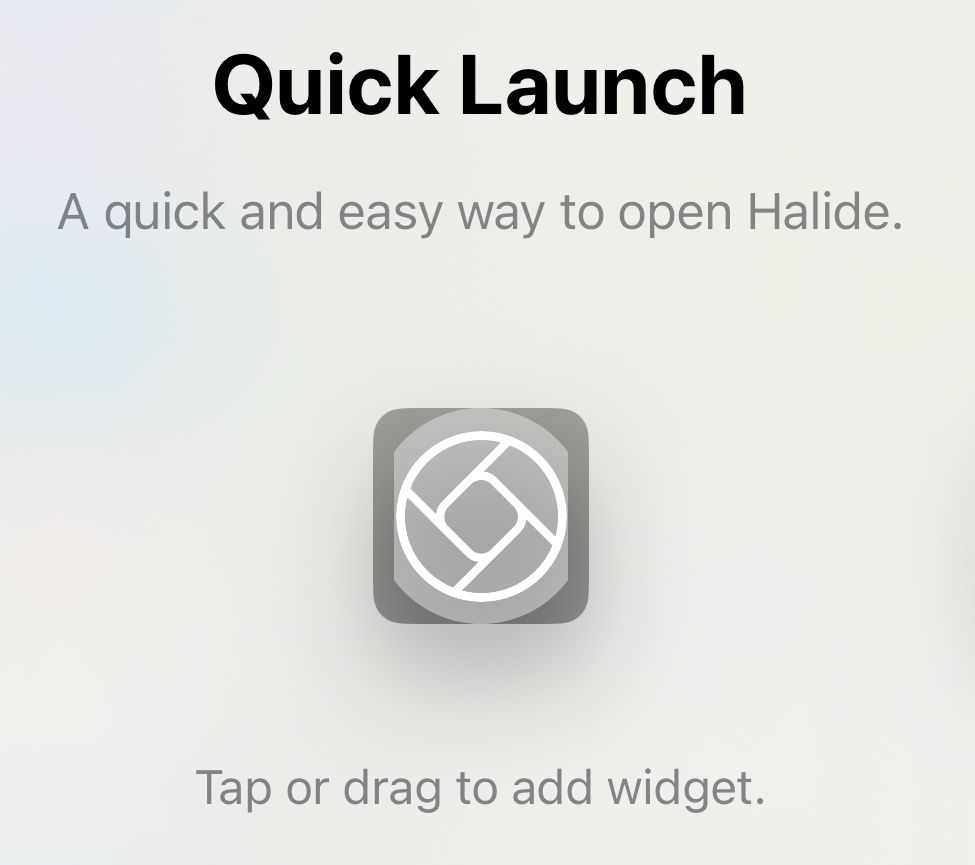
That looks embarassing, but it’s not the end of the world. On the more serious side of things, we found some rules quietly changed around we need to package up photos before sending them to the iOS photo library. Otherwise, they wouldn’t save. Yeah.
Whether it’s bugs or rules changing, each of these fixes usually only take a couple of days. Rarely, we’ll deal stuff that takes weeks to resolve, and we’ve even had an iOS issue that plagued us for over a year. This is all time we’d rather spend moving Halide forward, but it’s a normal reality of building software for a major platform, whether it’s an iPhone or Playstation.
And we have sins of our own. For example, the screen in Halide that lets you pick a custom icon would sometimes cut off text on smaller iPhones. A lot of companies have trouble making a case to go back and fix these small things, because that time could go toward delivering new features that drive sales. Well our team feels money comes second to shipping things we’re proud of, so we spent time this summer chipping away at small bugs and annoyances in Halide, like that icon picker.
We think this puts us in good shape to ship major features this fall — and we have some very cool things in the works.
Coming Soon (and Sometimes Never)

Whenever Apple releases a new technology, we don’t just slap it onto Halide and call it a day. One thing we consider is how mature it is. Maybe rather than launch something in iOS 17, we’ll wait until iOS 17.1.
One such feature was the new “Deferred Processing” system. It allows iOS to write a half-finished photo to your photo library right away, and then finish its smart processing later. This makes your iPhone even more responsive— at least, it sounds like it does. We were never able to get it to work on our test devices. We won’t release stuff we can’t test, because a slightly slower camera is better than a crashing one, but once we get it working we’ll ship it in an update.
Another reason we’ll reject a feature is if doesn’t make sense for Halide. There’s an old adage: “Every program attempts to expand until it can read mail.” It’s tempting to add every feature that comes out because it’s fun, and gets your app attention, but every feature comes at a cost.
Every new button makes the UI a bit more complicated, and every new line of code could break with a future OS update. We love it when Apple gives us new toys in OS updates, but we’re excited by updates that let us delete stuff.
But sometimes we’ll reject something for Halide that makes perfect sense as a little spinoff app…

Ahem. So: Halide 2.12 is available right now. We have our iPhone 15’s arriving this Friday, so keep your eyes out for our big iPhone update and our deep dive into the iPhone cameras around the corner!
Science & Environment
“Dark oxygen” created in the ocean without photosynthesis, researchers say
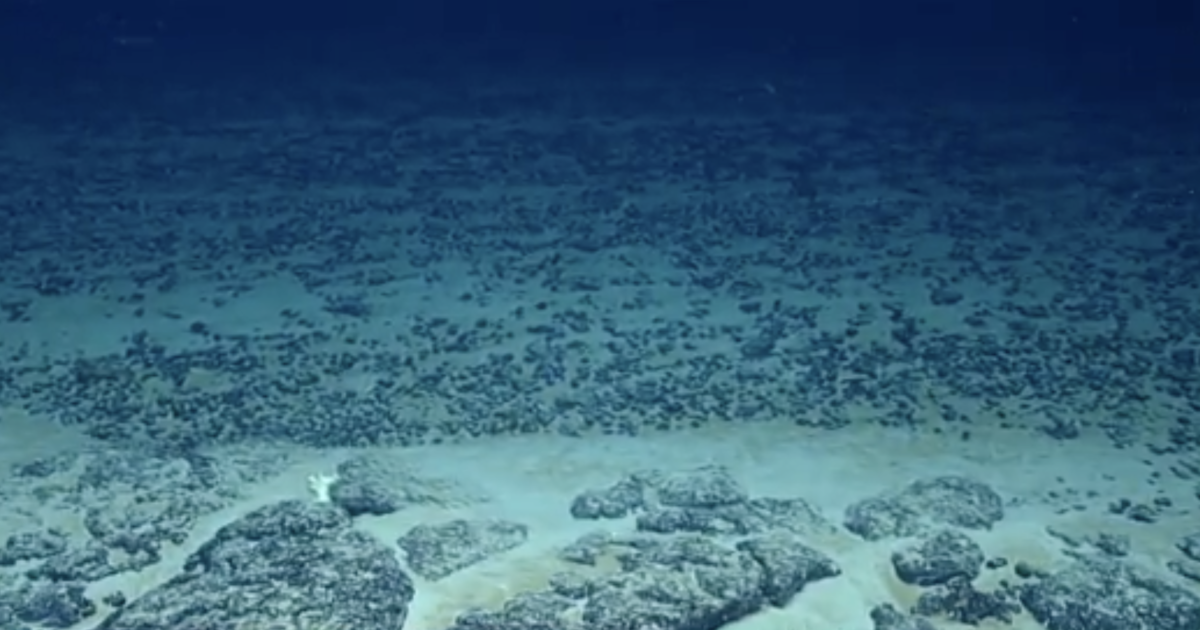
Researchers have discovered bundles of “dark oxygen” being formed on the ocean floor.
In a new study, over a dozen scientists from across Europe and the United States studied “polymetallic nodules,” or chunks of metal, that cover large swaths of the sea floor. Those nodules and other items found on the ocean floor in the deep sea between Hawaii and Mexico were subjected to a range of experiments, including injection with other chemicals or cold seawater.
The experiments showed that more oxygen — which is necessary for all life on Earth — was being created by the nodules than was being consumed. Scientists dubbed this output “dark oxygen.”
About half of the world’s oxygen comes from the ocean, but scientists previously believed it was entirely made by marine plants using sunlight for photosynthesis. Plants on land use the same process, where they absorb carbon dioxide and produce oxygen. But scientists for this study examined nodules about three miles underwater, where no sunlight can reach.
This isn’t the first time attention has been drawn to the nodules. The chunks of metal are made of minerals like cobalt, nickel, manganese and copper that are necessary to make batteries. Those materials may be what causes the production of dark oxygen.
“If you put a battery into seawater, it starts fizzing,” lead researcher Andrew Sweetman, a professor from the Scottish Association for Marine Science, told CBS News partner BBC News. “That’s because the electric current is actually splitting seawater into oxygen and hydrogen [which are the bubbles]. We think that’s happening with these nodules in their natural state.”
The metals on the nodules are valued in the trillions of dollars, setting of a race to pull the nodules up from the ocean’s depths in a process known as deep sea or seabed mining. Environmental activists have decried the practice.
Sweetman and other marine scientists worry that the deep sea mining could disrupt the production of dark oxygen and pose a threat to marine life that may depend on it.
“I don’t see this study as something that will put an end to mining,” Sweetman told the BBC. “[But] we need to explore it in greater detail and we need to use this information and the data we gather in future if we are going to go into the deep ocean and mine it in the most environmentally friendly way possible.”
Technology
Quantum computers teleport and store energy harvested from empty space


A quantum computing chip
IBM
Energy cannot be created from nothing, but physicists found a way to do the next best thing: extract energy from seemingly empty space, teleport it elsewhere and store it for later use. The researchers successfully tested their protocol using a quantum computer.
The laws of quantum physics reveal that perfectly empty space cannot exist – even places fully devoid of atoms still contain tiny flickers of quantum fields. In 2008, Masahiro Hotta at Tohoku University in Japan proposed that those flickers, together with the …
Science & Environment
What caused the hydrothermal explosion at Yellowstone National Park? A meteorologist explains

Yellowstone National Park visitors were sent running and screaming Tuesday when a hydrothermal explosion spewed boiling hot water and rocks into the air. No one was injured, but it has left some wondering: How does this happen and why wasn’t there any warning?
The Weather Channel’s Stephanie Abrams said explosions like this are caused by underground channels of hot water, which also create Yellowstone’s iconic geysers and hot springs.
“When the pressure rapidly drops in a localized spot, it actually forces the hot water to quickly turn to steam, triggering a hydrothermal explosion since gas takes up more space than liquid,” Abrams said Wednesday on “CBS Mornings.” “And this explosion can rupture the surface, sending mud and debris thousands of feet up and more than half a mile out in the most extreme cases.”
Tuesday’s explosion was not that big, Abrams said, “but a massive amount of rocks and dirt buried the Biscuit Basin,” where the explosion occurred.
A nearby boardwalk was left with a broken fence and was covered in debris. Nearby trees were also killed, with the U.S. Geological Survey saying the plants “can’t stand thermal activity.”
“Because areas heat up and cool down over time, trees will sometimes die out when an area heats up, regrow as it cools down, but then die again when it heats up,” the agency said on X.
The USGS said it considers this explosion small, and that similar explosions happen in the national park “perhaps a couple times a year.” Often, though, they happen in the backcountry and aren’t noticed.
“It was small compared to what Yellowstone is capable of,” USGS Volcanoes said on X. “That’s not to say it was not dramatic or very hazardous — obviously it was. But the big ones leave craters hundreds of feet across.”
The agency also said that “hydrothermal explosions, “being episodes of water suddenly flashing to steam, are notoriously hard to predict” and “may not give warning signs at all.” It likened the eruptions to a pressure cooker.
While Yellowstone sits on a dormant volcano, officials said the explosion was not related to volcanic activity.
“This was an isolated incident in the shallow hot-water system beneath Biscuit Basin,” the USGS said. “It was not triggered by any volcanic activity.”
Technology
What happened to the Metaverse?
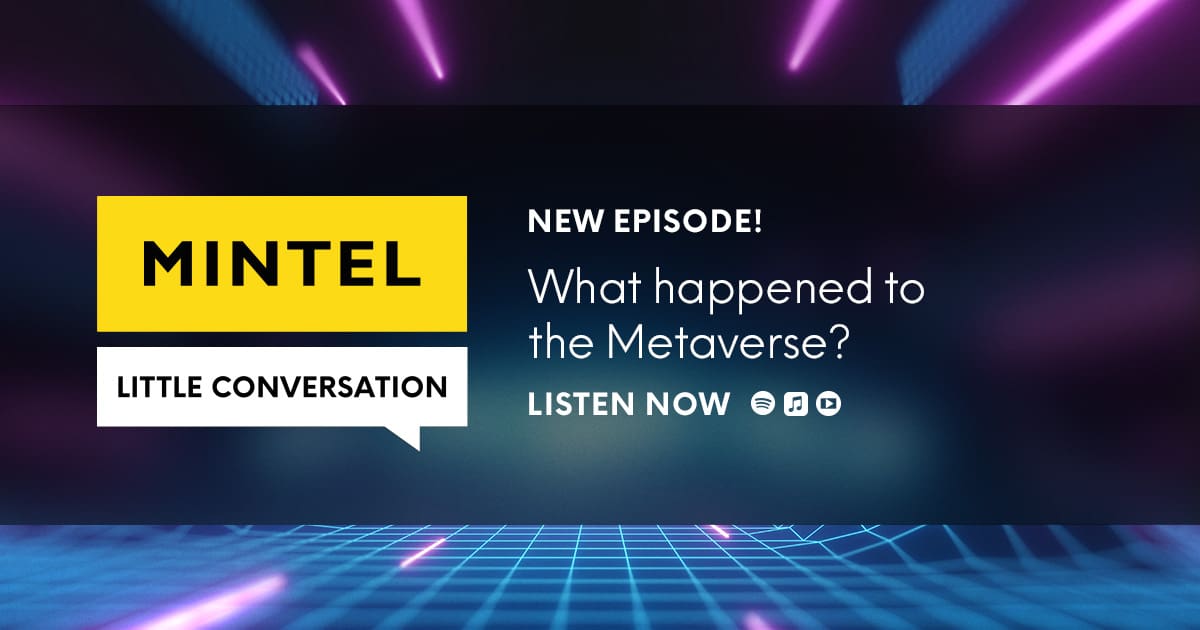
S6
Ep135

What happened to the Metaverse?
Host Andrew Davidson is joined by technology experts Brian Benway and Jan Urbanek in a discussion about the Metaverse. Our experts shed light on the latest technological and hardware advancements and marketing strategies from Big Tech. What will it take for the Metaverse to gain mainstream popularity? Listen now to find out!
Head over to Mintel’s LinkedIn to let us know what you think of today’s episode, and visit mintel.com to become a member of our free Spotlight community.
Visit the Mintel Store to explore all our technology research and buy a report today.
Meet the Host

Andrew Davidson
SVP/Chief Insights Officer, Mintel Comperemedia.
Meet the Guests

Brian Benway
Senior Analyst, Gaming and Entertainment, Mintel Reports US.

Jan Urbanek
Senior Analyst, Consumer Technology, Mintel Reports Germany.
Mintel News
For the latest in consumer and industry news, top trends and market perspectives, stay tuned to Mintel News featuring commentary from Mintel’s team of global category analysts.
More from Mintel
-
Mintel Technology Reports
Mintel’s Technology market research help you anticipate what’s next in the Technology industries….
-
Global Outlook on Sustainability: A Consumer Study 2024-25
Get the latest sustainability data, with insights on consumers, products and markets to inform your innovation strategy and build your sustainability strategy….
Podcast
2024-03-15T03:16:00+00:00
2024
0
Latest insights
June 6, 2024
In the exciting world of Artificial Intelligence (AI), prompts are instructions or queries you enter into the AI interface to get responses. If you want helpful responses, you…
November 28, 2023
Head over to Mintel’s LinkedIn to let us know what you think of today’s episode, and visit mintel.com to become a member of our free Spotlight community. Learn…
Download the Latest Market Intelligence
-

 Sport11 hours ago
Sport11 hours agoJoshua vs Dubois: Chris Eubank Jr says ‘AJ’ could beat Tyson Fury and any other heavyweight in the world
-

 News1 day ago
News1 day agoYou’re a Hypocrite, And So Am I
-

 News12 hours ago
News12 hours agoIsrael strikes Lebanese targets as Hizbollah chief warns of ‘red lines’ crossed
-

 Sport10 hours ago
Sport10 hours agoUFC Edmonton fight card revealed, including Brandon Moreno vs. Amir Albazi headliner
-

 Technology9 hours ago
Technology9 hours agoiPhone 15 Pro Max Camera Review: Depth and Reach
-

 Science & Environment13 hours ago
Science & Environment13 hours agoHow one theory ties together everything we know about the universe
-

 Science & Environment22 hours ago
Science & Environment22 hours agoSunlight-trapping device can generate temperatures over 1000°C
-

 News8 hours ago
News8 hours agoBrian Tyree Henry on voicing young Megatron, his love for villain roles
-

 Science & Environment1 day ago
Science & Environment1 day agoQuantum time travel: The experiment to ‘send a particle into the past’
-

 CryptoCurrency11 hours ago
CryptoCurrency11 hours ago2 auditors miss $27M Penpie flaw, Pythia’s ‘claim rewards’ bug: Crypto-Sec
-

 CryptoCurrency11 hours ago
CryptoCurrency11 hours agoBitcoin miners steamrolled after electricity thefts, exchange ‘closure’ scam: Asia Express
-

 CryptoCurrency11 hours ago
CryptoCurrency11 hours agoCardano founder to meet Argentina president Javier Milei
-

 CryptoCurrency11 hours ago
CryptoCurrency11 hours agoDorsey’s ‘marketplace of algorithms’ could fix social media… so why hasn’t it?
-

 CryptoCurrency11 hours ago
CryptoCurrency11 hours agoLow users, sex predators kill Korean metaverses, 3AC sues Terra: Asia Express
-
Business10 hours ago
How Labour donor’s largesse tarnished government’s squeaky clean image
-

 Science & Environment13 hours ago
Science & Environment13 hours ago‘Running of the bulls’ festival crowds move like charged particles
-

 CryptoCurrency10 hours ago
CryptoCurrency10 hours agoEthereum is a 'contrarian bet' into 2025, says Bitwise exec
-

 Science & Environment13 hours ago
Science & Environment13 hours agoRethinking space and time could let us do away with dark matter
-

 Science & Environment11 hours ago
Science & Environment11 hours agoWe may have spotted a parallel universe going backwards in time
-

 CryptoCurrency11 hours ago
CryptoCurrency11 hours agoArthur Hayes’ ‘sub $50K’ Bitcoin call, Mt. Gox CEO’s new exchange, and more: Hodler’s Digest, Sept. 1 – 7
-

 CryptoCurrency11 hours ago
CryptoCurrency11 hours agoTreason in Taiwan paid in Tether, East’s crypto exchange resurgence: Asia Express
-

 CryptoCurrency11 hours ago
CryptoCurrency11 hours agoLeaked Chainalysis video suggests Monero transactions may be traceable
-

 CryptoCurrency11 hours ago
CryptoCurrency11 hours agoJourneys: Robby Yung on Animoca’s Web3 investments, TON and the Mocaverse
-

 CryptoCurrency11 hours ago
CryptoCurrency11 hours agoLouisiana takes first crypto payment over Bitcoin Lightning
-

 CryptoCurrency11 hours ago
CryptoCurrency11 hours agoAre there ‘too many’ blockchains for gaming? Sui’s randomness feature: Web3 Gamer
-

 CryptoCurrency11 hours ago
CryptoCurrency11 hours agoCrypto whales like Humpy are gaming DAO votes — but there are solutions
-

 CryptoCurrency11 hours ago
CryptoCurrency11 hours agoHelp! My parents are addicted to Pi Network crypto tapper
-

 CryptoCurrency11 hours ago
CryptoCurrency11 hours ago$12.1M fraud suspect with ‘new face’ arrested, crypto scam boiler rooms busted: Asia Express
-

 CryptoCurrency11 hours ago
CryptoCurrency11 hours ago‘Everything feels like it’s going to shit’: Peter McCormack reveals new podcast
-

 Science & Environment13 hours ago
Science & Environment13 hours agoFuture of fusion: How the UK’s JET reactor paved the way for ITER
-

 CryptoCurrency11 hours ago
CryptoCurrency11 hours agoSEC sues ‘fake’ crypto exchanges in first action on pig butchering scams
-

 CryptoCurrency11 hours ago
CryptoCurrency11 hours agoFed rate cut may be politically motivated, will increase inflation: Arthur Hayes
-

 CryptoCurrency11 hours ago
CryptoCurrency11 hours agoDecentraland X account hacked, phishing scam targets MANA airdrop
-

 CryptoCurrency11 hours ago
CryptoCurrency11 hours agoCZ and Binance face new lawsuit, RFK Jr suspends campaign, and more: Hodler’s Digest Aug. 18 – 24
-

 CryptoCurrency11 hours ago
CryptoCurrency11 hours agoCertiK Ventures discloses $45M investment plan to boost Web3
-

 CryptoCurrency11 hours ago
CryptoCurrency11 hours agoMemecoins not the ‘right move’ for celebs, but DApps might be — Skale Labs CMO
-

 CryptoCurrency11 hours ago
CryptoCurrency11 hours agoTelegram bot Banana Gun’s users drained of over $1.9M
-

 CryptoCurrency11 hours ago
CryptoCurrency11 hours agoDZ Bank partners with Boerse Stuttgart for crypto trading
-

 CryptoCurrency11 hours ago
CryptoCurrency11 hours agoRedStone integrates first oracle price feeds on TON blockchain
-

 CryptoCurrency11 hours ago
CryptoCurrency11 hours agoBitcoin bulls target $64K BTC price hurdle as US stocks eye new record
-

 CryptoCurrency11 hours ago
CryptoCurrency11 hours agoSEC asks court for four months to produce documents for Coinbase
-

 CryptoCurrency11 hours ago
CryptoCurrency11 hours ago‘No matter how bad it gets, there’s a lot going on with NFTs’: 24 Hours of Art, NFT Creator
-

 CryptoCurrency10 hours ago
CryptoCurrency10 hours agoBlockdaemon mulls 2026 IPO: Report
-
Business10 hours ago
Thames Water seeks extension on debt terms to avoid renationalisation
-

 Politics10 hours ago
Politics10 hours agoI’m in control, says Keir Starmer after Sue Gray pay leaks
-
Politics10 hours ago
‘Appalling’ rows over Sue Gray must stop, senior ministers say | Sue Gray
-
Business9 hours ago
UK hospitals with potentially dangerous concrete to be redeveloped
-
Business9 hours ago
Axel Springer top team close to making eight times their money in KKR deal
-

 News8 hours ago
News8 hours ago“Beast Games” contestants sue MrBeast’s production company over “chronic mistreatment”
-

 News8 hours ago
News8 hours agoSean “Diddy” Combs denied bail again in federal sex trafficking case
-

 News8 hours ago
News8 hours agoSean “Diddy” Combs denied bail again in federal sex trafficking case in New York
-

 News8 hours ago
News8 hours agoBrian Tyree Henry on his love for playing villains ahead of “Transformers One” release
-

 News8 hours ago
News8 hours agoBrian Tyree Henry on voicing young Megatron, his love for villain roles
-

 CryptoCurrency8 hours ago
CryptoCurrency8 hours agoCoinbase’s cbBTC surges to third-largest wrapped BTC token in just one week
-

 Technology3 days ago
Technology3 days agoYouTube restricts teenager access to fitness videos
-

 News13 hours ago
News13 hours agoChurch same-sex split affecting bishop appointments
-

 Politics2 days ago
Politics2 days agoTrump says he will meet with Indian Prime Minister Narendra Modi next week
-

 Politics1 day ago
Politics1 day agoWhat is the House of Lords, how does it work and how is it changing?
-

 Politics1 day ago
Politics1 day agoKeir Starmer facing flashpoints with the trade unions
-

 Health & fitness2 days ago
Health & fitness2 days agoWhy you should take a cheat day from your diet, and how many calories to eat
-

 Technology12 hours ago
Technology12 hours agoFivetran targets data security by adding Hybrid Deployment
-

 Science & Environment1 day ago
Science & Environment1 day agoElon Musk’s SpaceX contracted to destroy retired space station
-
News11 hours ago
Freed Between the Lines: Banned Books Week
-

 MMA10 hours ago
MMA10 hours agoUFC’s Cory Sandhagen says Deiveson Figueiredo turned down fight offer
-

 MMA10 hours ago
MMA10 hours agoDiego Lopes declines Movsar Evloev’s request to step in at UFC 307
-

 Football10 hours ago
Football10 hours agoNiamh Charles: Chelsea defender has successful shoulder surgery
-

 Football10 hours ago
Football10 hours agoSlot's midfield tweak key to Liverpool victory in Milan
-

 Science & Environment14 hours ago
Science & Environment14 hours agoHyperelastic gel is one of the stretchiest materials known to science
-

 Science & Environment13 hours ago
Science & Environment13 hours agoHow to wrap your head around the most mind-bending theories of reality
-

 Technology2 days ago
Technology2 days agoCan technology fix the ‘broken’ concert ticketing system?
-

 Fashion Models10 hours ago
Fashion Models10 hours agoMiranda Kerr nude
-

 Fashion Models10 hours ago
Fashion Models10 hours ago“Playmate of the Year” magazine covers of Playboy from 1971–1980
-

 Science & Environment18 hours ago
Science & Environment18 hours agoA new kind of experiment at the Large Hadron Collider could unravel quantum reality
-

 Health & fitness2 days ago
Health & fitness2 days ago11 reasons why you should stop your fizzy drink habit in 2022
-

 Politics9 hours ago
Politics9 hours agoLabour MP urges UK government to nationalise Grangemouth refinery
-

 Science & Environment17 hours ago
Science & Environment17 hours agoHow Peter Higgs revealed the forces that hold the universe together
-

 Technology2 days ago
Technology2 days agoWhat will future aerial dogfights look like?
-

 Science & Environment12 hours ago
Science & Environment12 hours agoOdd quantum property may let us chill things closer to absolute zero
-

 Science & Environment19 hours ago
Science & Environment19 hours agoQuantum forces used to automatically assemble tiny device
-

 Entertainment8 hours ago
Entertainment8 hours ago“Jimmy Carter 100” concert celebrates former president’s 100th birthday
-

 CryptoCurrency11 hours ago
CryptoCurrency11 hours agoSEC settles with Rari Capital over DeFi pools, unregistered broker activity
-

 News8 hours ago
News8 hours agoJoe Posnanski revisits iconic football moments in new book, “Why We Love Football”
-

 Health & fitness2 days ago
Health & fitness2 days agoHow to adopt mindful drinking in 2022
-

 Health & fitness2 days ago
Health & fitness2 days agoWhat 10 days of a clean eating plan actually does to your body and why to adopt this diet in 2022
-

 Health & fitness2 days ago
Health & fitness2 days agoWhen Britons need GoFundMe to pay for surgery, it’s clear the NHS backlog is a political time bomb
-

 Health & fitness2 days ago
Health & fitness2 days agoThe maps that could hold the secret to curing cancer
-
Health & fitness2 days ago
Covid v flu v cold and how to tell the difference between symptoms this winter
-

 Politics1 day ago
Politics1 day agoWill pension increase make up for loss of winter fuel payments?
-

 Science & Environment24 hours ago
Science & Environment24 hours agoQuantum to cosmos: Why scale is vital to our understanding of reality
-

 Business2 days ago
Business2 days agoBillionaire investor Ray Dalio warns of threat to democracy
-

 Science & Environment1 day ago
Science & Environment1 day agoHow to wrap your mind around the real multiverse
-

 Technology3 days ago
Technology3 days agoTrump says Musk could head ‘government efficiency’ force
-

 Technology2 days ago
Technology2 days agoTech Life: Athletes using technology to improve performance
-
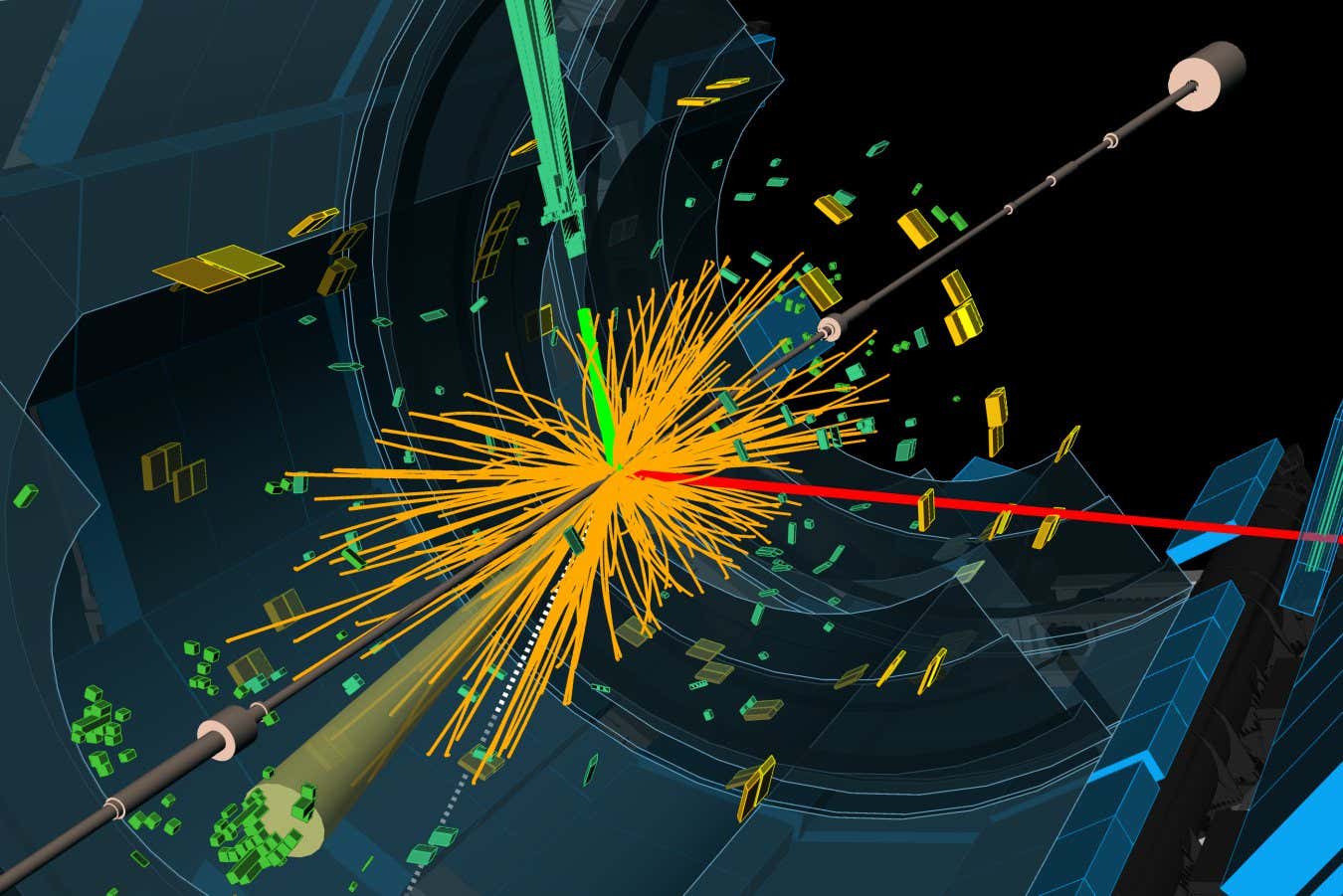
 Science & Environment2 days ago
Science & Environment2 days agoParticle physicists may have solved a strange mystery about the muon
-

 Science & Environment1 day ago
Science & Environment1 day agoTime may be an illusion created by quantum entanglement
-
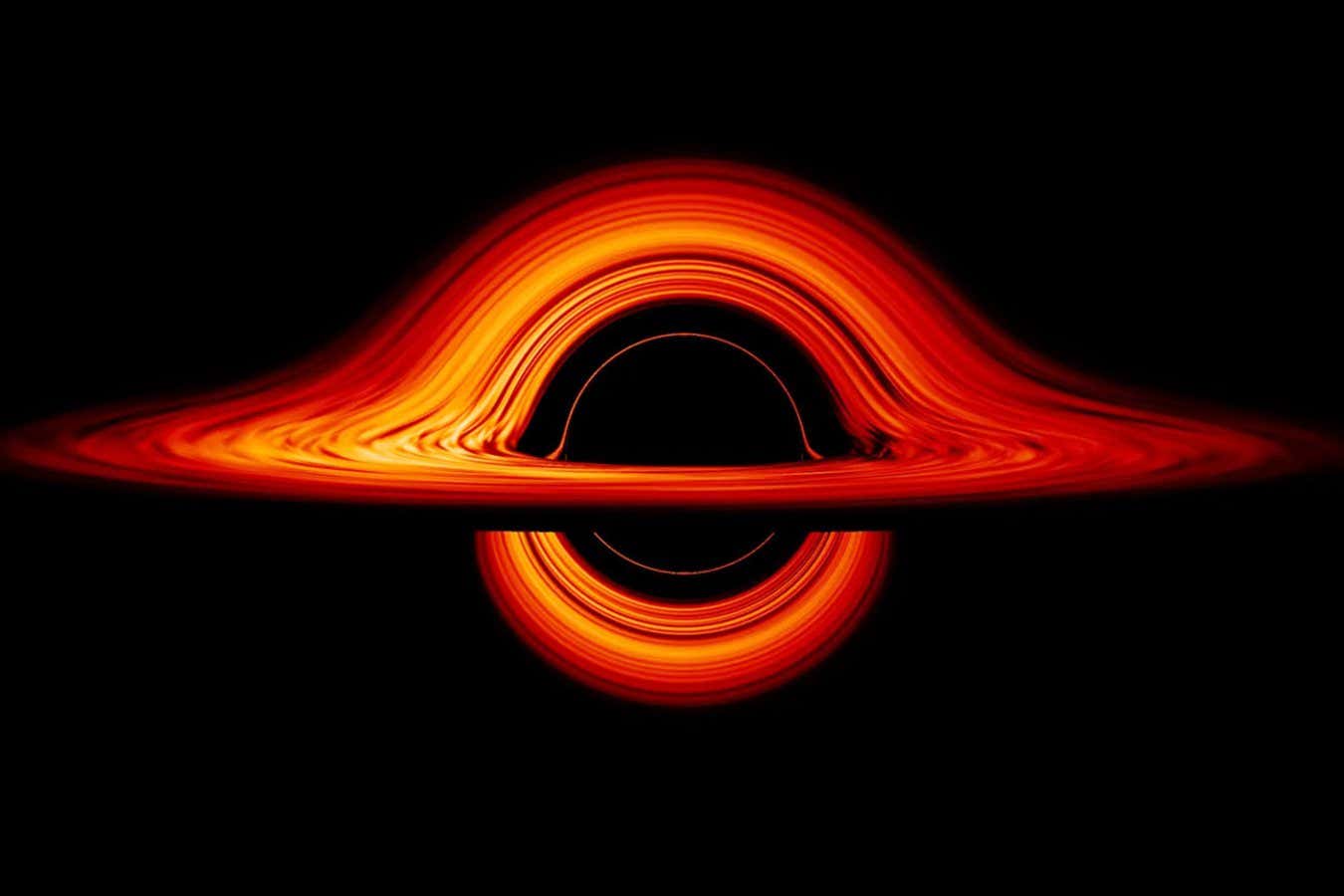
 Science & Environment1 day ago
Science & Environment1 day agoHow the weird and powerful pull of black holes made me a physicist
-

 Politics23 hours ago
Politics23 hours agoIs there a £22bn ‘black hole’ in the UK’s public finances?
-

 Science & Environment23 hours ago
Science & Environment23 hours agoX-ray laser fires most powerful pulse ever recorded
-

 Science & Environment23 hours ago
Science & Environment23 hours agoWhat are fractals and how can they help us understand the world?
-

 Science & Environment22 hours ago
Science & Environment22 hours agoHow indefinite causality could lead us to a theory of quantum gravity



You must be logged in to post a comment Login